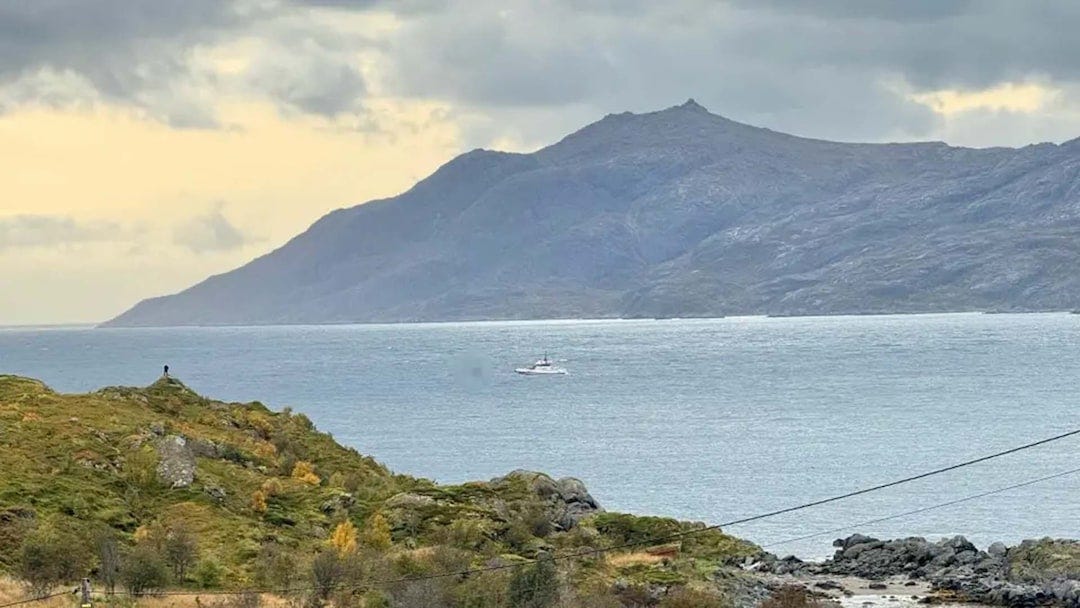The Lofoten Boat Mystery: Submarine Shadows
A speculative probe into today's ongoing capsizing crisis off Vestvågøy, amid heightened military maneuvers in Norwegian waters, and reimagining maritime vigilance in tense geopolitical seas
In the deceptively calm waters off Vestvågøy in Lofoten on Friday, September 26, 2025, a brand-new 33-foot fishing boat from Nordic Sea Angling suddenly capsized, turning a family outing into a harrowing ordeal. On board were seven Swedes: a family of four adults, two children, and an experienced guide. Six were rescued, but a 10-year-old girl remains missing amid worsening weather—now battered by winds and storms that have hampered searches, including with underwater vehicles. Tragically, a Norwegian rescue worker from the sea rescue service perished during the operation. Company CEO Jimmy Andersson called it “completely incomprehensible” and “inexplicable,” noting 21 seasons without serious incidents in this weather-sheltered area. Official focus is on tidal currents, but with reports of intense submarine activity nearby, could a hidden collision with a stealth vessel—Russian or NATO—be the unseen force? This theory draws on documented patrols in the Norwegian Sea, exposing risks in these strategic depths.
Key investigative insights from this theory:
Stealth Operations Exposed: Recent patrols by Russian Yasen-class submarines in the Norwegian Sea, including all three Northern Fleet vessels absent from base as of August 25, heighten risks of undetected civilian encounters off Lofoten’s coast. This prompts scrutiny of surveillance gaps in high-traffic maritime zones—similar to mandating enhanced sonar protocols under international navigation codes to block submerged hazards.
Rapid Response Anomalies: A helicopter’s swift arrival within minutes of the 13:00 distress call suggests possible prior military monitoring, especially with NATO’s P-8 Poseidon aircraft actively hunting submarines in the area just weeks prior. This underscores the value of integrated intelligence frameworks in volatile waters—analogous to requiring real-time data sharing in aviation safety standards to preempt covert disruptions.
Structural Damage Clues: The boat’s sudden flip in “very calm” seas, without time to deploy life rafts, hints at an external impact beyond waves, potentially from a submarine’s wake or hull amid documented hunts off Lofoten. This highlights the need for forensic hull analysis in unexplained incidents—much like enforcing post-accident engineering reviews in transportation regulations to uncover mechanical or external faults.
Geopolitical Hotspots: Escalating NATO-Russia tensions have spiked submarine activity in Arctic routes near Norway, with U.S. destroyers and Norwegian frigates patrolling the North Cape as recently as September 1, turning routine areas into flashpoints. This calls for transparent alliances among coastal nations—comparable to implementing joint oversight committees in energy pipeline governance to avoid escalation from hidden operations.
Narrative Control Risks: Amid “difficult search conditions” with winds and bad weather delaying underwater efforts, official silence on military roles fuels distrust, especially with no clear cause despite the boat’s newness and guide’s experience. This advocates for independent inquiries with robust whistleblower protections—similar to establishing neutral audit mechanisms in corporate scandals to ensure accountability without suppressing truths.
This submarine hypothesis disrupts the narrative as searches continue today, September 27, 2025, envisioning fortified international maritime accords like amplified NATO drills. But it poses: Can openness pierce these murky depths, or might AI-enhanced detection sidestep official denials? Genuine security requires alertness, not obscurity—protecting innocents at sea, without arming silence against the vulnerable.

